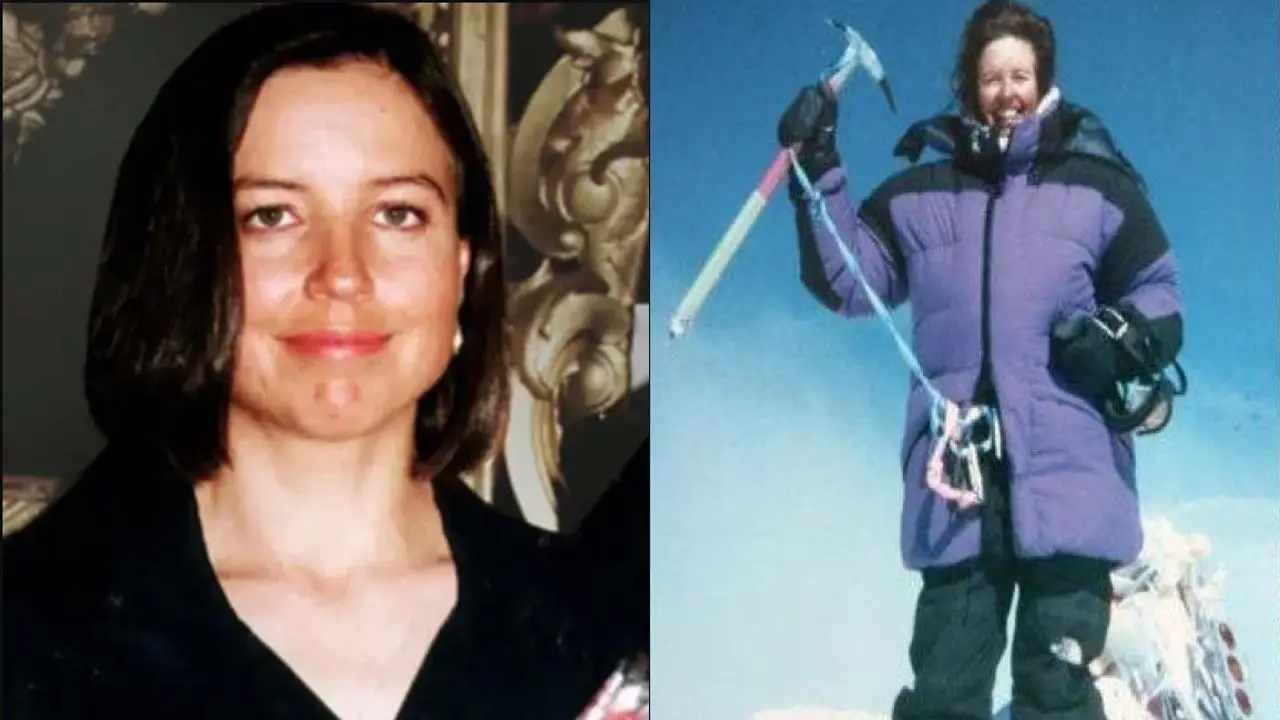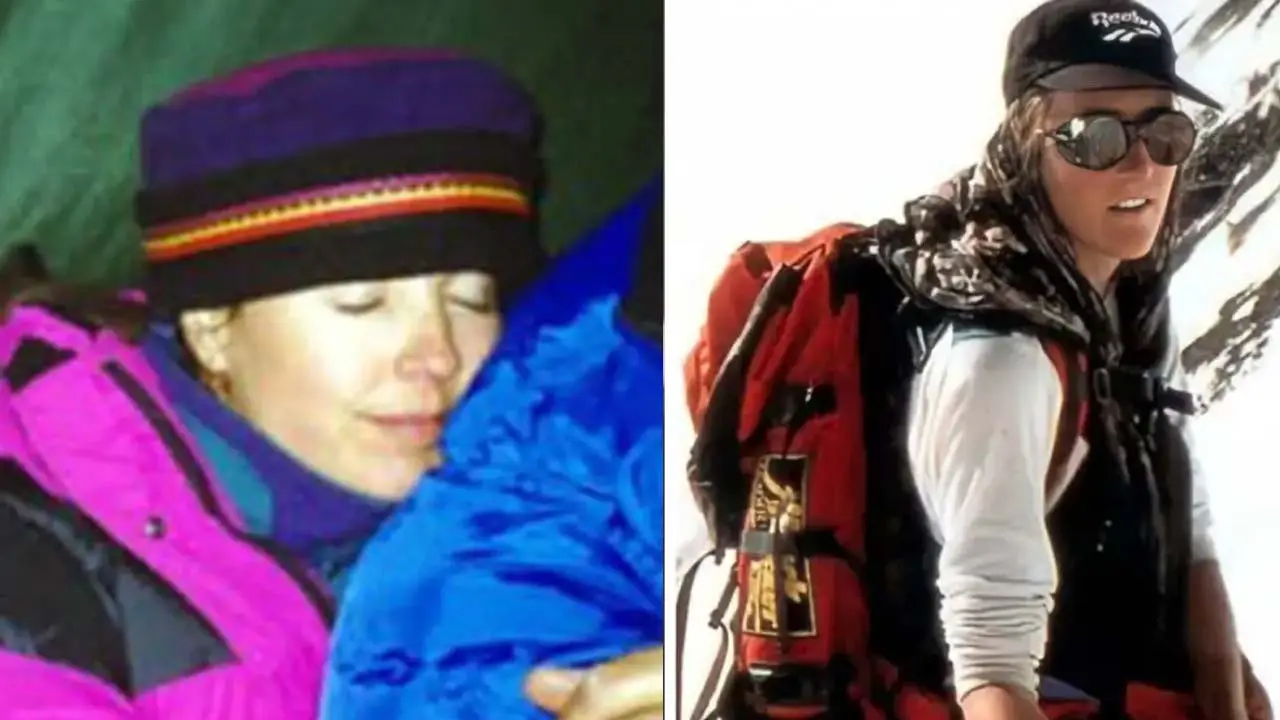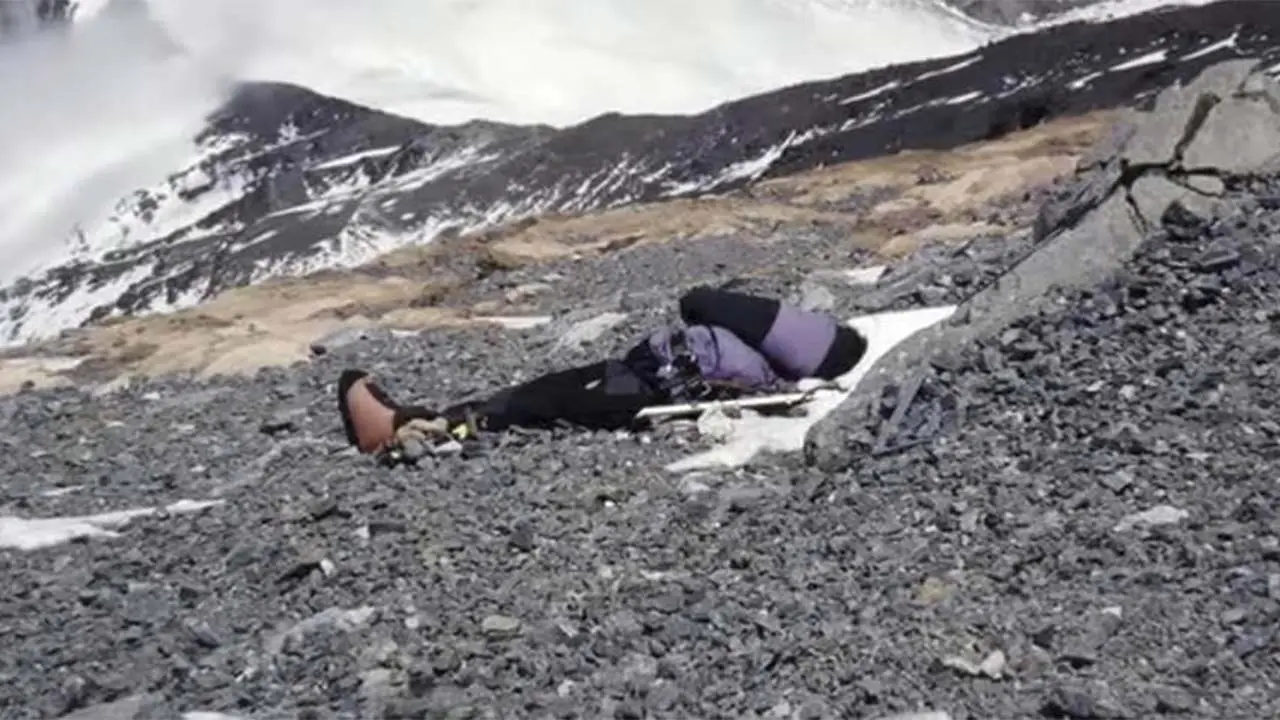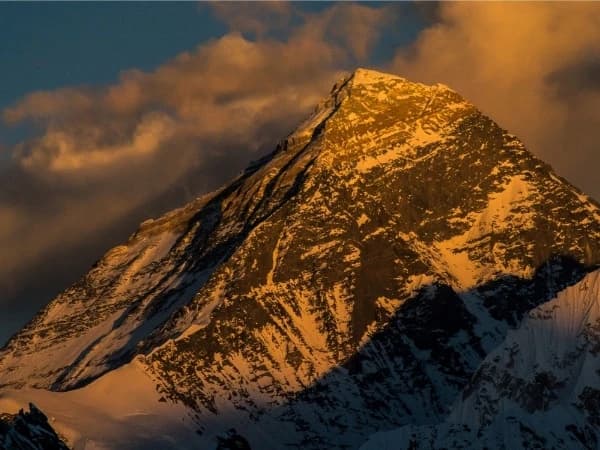Who Was Francy's Arsentiev?
Francys Arsentiev was a remarkable woman with a quiet determination and a deep passion for adventure before becoming a tragic icon on Everest. Francys was born in Honolulu, Hawaii, in 1958. Later, she moved to Colorado, a place where she developed a love for the outdoors and high-altitude pursuits. Her academic path was equally impressive. She earned her undergraduate degree in business and a master's degree from the International School of Business Management.
At first, Francys didn't begin as a professional mountaineer. Her entry into the world of climbing was gradual, built on a growing desire to push boundaries and explore some of the world's most unforgiving terrains. She summited several major peaks before Everest, including Denali in Alaska and Elbrus in Russia, proving her skills in a high altitude environment.
Francy's life took a transformative turn when she met Sergei Arsentiev, a seasoned Russian climber. Their bonding went beyond marriage; both of them became a climbing team driven by shared goals and mutual respect. Francys Arsentiev and Sergei Arsentiev, together, developed a dream to reach Everest's summit without supplemental oxygen. This is a feat reserved for only the most elite climbers due to the extreme demands that it places on the human body.
Unlike many thrill-seekers who were chasing fame, Francys climbed with quiet resolve. She was not even sponsored, not widely known and not driven by attention. She had her own personal mission to accomplish something extraordinary on her own terms.
Francys Arsentiev is defined by a deep commitment to high-altitude climbing, paired with her humble and disciplined approach. Her quiet strength and ambition were the foundation of her final journey, which would elevate her name into mountaineering history and ultimately global memory.

The Final Climb: Everest 1998
In May 1998, Francys and Sergei Arsentiev stood at the base of Mount Everest and were determined to attempt one of the most challenging climbs ever possible, a summit without bottled oxygen. Their approach was unconventional, minimalist. Without hiring Sherpas or a support team, they relied solely on each other and their experience. For a few days, they ascended the slopes in calculated stages, giving their bodies time to adapt to decreasing oxygen levels.
After multiple acclimatization efforts and a weather delay, the couple began their final push towards the summit. On May 22, Francys reached the top of the world and achieved her goal, becoming the first American woman to summit Everest without supplemental oxygen. However, triumph quickly turned into danger and the descent proved far more difficult than anticipated.
Oxygen deprivation began to take its toll on Francys. Reports from climbers on the mountain described her as disorientated and unable to move efficiently. During the descent, the couple got separated. While Sergei made it back to camp, Francys didn't arrive. Refusing to abandon her, Sergei left camp the next day with oxygen and medicine; he was determined to find and rescue his wife.
Other climbers encountered Francys still alive, alone at high altitude slope and in severe distress. Despite attempting to help her, the combination of thin air, exhaustion and dangerous terrain made rescue impossible. Francys was left behind as the climbers were forced to prioritize their own survival. Tragically, Sergei never returned and his body was discovered a year later, lower down the mountain, suggesting he fell during his attempt to reach Francys.
The 1998 expedition was not just another failed summit attempt; but in reality, it became one of the most haunting tragedies on Everest, which revealed the unforgiving nature of high-altitude climbing. Where, even love, courage and experience sometimes are not enough to survive the journey.
The Tragic End
As climbers passed through Everest's Death Zone in the days following May 22, 1998, several of them reported a haunting sight near the summit ridge and a lone woman who was barely conscious, lying down in the snow. That was Francys Arsentiev, she was suffering from extreme hypoxia, frostbite and exhaustion and she was unable to stand, speak clearly, or move without assistance.
Despite the will of those who encountered her, no one could save her. At over 8,400 meters, in oxygen-starved air where even the strongest climbers can barely care for themselves. It was impossible to help someone in that condition without equipment and extra oxygen. One team, led by Uzbek climbers, attempted to give her oxygen and secure her with ropes, but they were forced to retreat when conditions worsened.
Francys spent her final hours exposed to the elements, unable to descend and with no more strength to wait. Her position, expression and tragic circumstances surrounding her death later led to the nickname “ Everest Sleeping Beauty”. Her still, peaceful appearance gave rise to the nickname, but that deep sorrow for her fate was hidden behind that beautiful name.
Sergei Arsentiev had disappeared because he had left camp 6 to find and help his wife. But, he never returned and a year later, climbers discovered his body far below, suggesting he fell while trying to reach her alone without support and ropes.
Together, their story became one of the most heartbreaking Everest stories. Unlike many high altitude tragedies caused by avalanches or storms. Francys and Sergei's death was a slow, visible descent into helplessness, which became a harsh reminder of the unforgiving nature of the Death Zone and the high cost of climbing Everest without oxygen.
Their final moments remain among the most tragic and haunting episodes ever recorded on the World's Highest Mountain.

The Aftermath and Global Reaction
The tragic deaths of Francys and Sergei Arsentiev sent ripples through the mountaineering world and the news of their date traveled quickly. Not just because of the emotional gravity of their story but due to the ethical dilemmas exposed on Everest's slope. All the climbers and non-climbers were left questioning how such a heartbreaking situation could unfold in plain sight, having no possibility of rescue.
Media coverage intensified after several climbers shared their encounters with Francys in her final moments. First-hand accounts highlighted the painful truth of the Death Zone at such altitudes that human survival becomes so precarious and saving others is nearly impossible. The harsh reality that fellow climbers had to walk away from someone still alive ignited worldwide debate on the moral cost of extreme mountaineering.
For many people, the story of Mount Everest Sleeping Beauty symbolized the growing commercialization of the mountains. Critics argued that increased traffic on the mountain, lack of regulation and climbers' obsession with summiting at all costs had begun to overshadow human compassion.
Despite all the controversy, many mountaineers honored the Arsenatives with respect and Sergei's selfless act. He returned alone to Francys and it was seen as a deeply human gesture of love, courage and sacrifices. Francy's accomplishment, though overshadowed by tragedy and remains a record-setting feat.
Their story became more than a cautionary tale, which forced the climbing community to confront uncomfortable questions about responsibility, limits and what truly matters in pursuit of high altitude dreams.
“Sleeping Beauty”- The Name and The Image
Among all the souls lost on Mount Everest, only a few have left as haunting an imprint as Francys Arsentiev and after her passing. Climbers started referring to her as “Sleeping Beauty of Everest”, a name that quickly took hold in mountaineering circles and in the media. The name wasn't given casually, but it emerged from a mixture of sorrow, shock and the surreal sight of her body preserved by the extreme cold.
Francys was found resting peacefully in the snow, her eyes closed, long hair flowing from under her hood and her face serene. Her position and expression bore an eerie resemblance to a person peacefully asleep, not as a typical image of death in such a brutal environment. Stillness, silence and her location just below the summit created a visual that many climbers would never forget.
“Everest Sleeping Beauty” is not only a nickname, but it also underscores the emotional impact of her story. Unlike the tales of sudden avalanches or anonymous victims lost to the ice, Francys became a symbol of vulnerability on Everest as a reminder that even the strongest and most prepared can succumb when nature turns against them.
Photographs taken by climbers and shared across the forums and documentaries further etched her image into public memory. Over time, the visuals sparked both empathy and debate as some called for greater respect and privacy. Meanwhile, others argued that her presence was a powerful warning to those who followed.
Ultimately, the name Everest Sleeping Beauty Francys Arsentiev became inseparable from her story, not on a sensational level but as a testament to the quiet tragedy that unfolded above 8,000 meters.

Legacy and Remembrance
Francys Arsentiev’s legacy extends far beyond the icy ridge where she took her final breath. Her life ended in tragedy, but her determination, strength and quiet courage have made her a lasting figure in the world of high altitude mountaineering. She remains the first American woman to summit Mount Everest without supplemental oxygen and a feat accomplished not through fame or sponsorship but through perseverance and personal resolve.
Her heartbreaking story inspired a conversation about the risk climbers are willing to accept in pursuit of the summit. Francys and Sergei's devotion to one another, even in the most extreme conditions, left a deep emotional impact on fellow climbers and audiences around the world.
In 2007, a group of climbers led by Ian Woodall, they were the climbers who encountered Francys during her final hours, returned to the mountain on a mission of closure. They respectfully moved her body out of sight, draping it on the American flag and performing a brief ceremony. This expedition, known as “The Tao of Everest,” was done to honor her memory and provide peace for her loved ones.
Over these years, Everest Sleeping Beauty’s story has been retold in different books, documentaries and online forums. Some see her as a symbol of Everest's dangers and others remember her as the daring woman who dared to push the limit quietly and bravely.
Conclusion
The story of Francys Arsentiev, the ‘Mount Everest Sleeping Beauty, ' is not merely one of loss, but actually it is a powerful narrative of ambition, love, vulnerability and the unforgiving nature of the world's highest mountain. Her journey to Everest was driven by an unshakable goal of accomplishing something extraordinary without seeking fame or recognition. In doing so, she achieved a historic milestone, but it also became part of one of the mountain’s most unforgettable tragedies.
Francy's final moments of her life on Everest alone yet witnessed by others and have haunted climbers and readers alike for many decades. She was not just a climber who lost her life on the Death Zone, but she became a symbol of everything that Everest can take a lot despite preparation, skill and sheer willpower. The image of the “Sleeping Beauty of Everest” was never about sensationalism, but it reflected the stillness of a life frozen in time and the haunting Beauty of a dream that came at the ultimate price.
Francy's legacy, however, is not one of defeat, but it lives on in the conversations she sparked about the ethics of rescue at high altitude, the emotional cost of mountaineering and all the deeply human stories that are hidden behind every summit attempt. Arsentiev's name remained as an unforgettable chapter in Everest's long and complex history. But it was not about how she lost her life, but also about how she lived and climbed throughout her journey. Francy's life will always remind us of the greatness that is not always loud and true courage that often walks hand in hand with quiet determination. On a mountain where so many are forgotten, Francys Arsentiev will always be remembered not only as a climber but as Everest's Sleeping Beauty.
“Some climb to conquer mountains. Others climb to discover themselves. Francys did both of these and became eternal”.








